- Home
- Thomas Hardy
Jude the Obscure (Barnes & Noble Classics Series)
Jude the Obscure (Barnes & Noble Classics Series) Read online
Table of Contents
FROM THE PAGES OFJUDE THE OBSCURE
Title Page
Copyright Page
THOMAS HARDY
THE WORLD OF THOMAS HARDY AND JUDE THE OBSCURE
Introduction
PREFACE TO THE FIRST EDITION
PART FIRST - At Marygreen
I. - I.
I.-II.
I.-III.
I.-IV.
I.-V.
I.-VI.
I.-VII.
I.-VIII.
I.-IX.
I.-X.
I.-XI.
PART SECOND - At Christminster
II.-I.
II.-II.
II.-III.
II.-IV.
II.-V.
II.-VI.
II.-VII.
PART THIRD - At Melchester
III.-I.
III.-II.
III.-III.
III.-IV.
III.-V.
III.-VI.
III.-VII.
III.-VIII.
III.-IX.
III.-X.
PART FOURTH - At Shaston
IV.-I.
IV.-II.
IV.-III.
IV.-IV.
IV.-V.
IV.-VI.
PART FIFTH - At Aldbrickham and Elsewhere
V.-I.
V.-II.
V.-III.
V.- IV.
V.-V.
V.-VI.
V.-VII.
V.-VIII.
PART SIXTH - At Christminster Again
VI.-I.
VI.-II.
VI.-III.
VI.-IV.
VI.-V.
VI.-VI.
VI.-VII.
VI.-VIII.
VI.-IX.
VI.-X.
VI.-XI.
ENDNOTES
INSPIRED BY JUDE THE OBSCURE
COMMENTS & QUESTIONS
FOR FURTHER READING
FROM THE PAGES OF
JUDE THE OBSCURE
“You know what a university is, and a university degree? It is the necessary hall-mark of a man who wants to do anything in teaching.”
(page 10)
Somebody might have come along that way who would have asked him his trouble, and might have cheered him by saying that his notions were further advanced than those of his grammarian. But nobody did come, because nobody does; and under the crushing recognition of his gigantic error Jude continued to wish himself out of the world. (page 31)
Jude Fawley shouldered his tool-basket and resumed his lonely way, filled with an ardour at which he mentally stood at gaze. He had just inhaled a single breath from a new atmosphere, which had evidently been hanging round him everywhere he went, for he knew not how long, but had somehow been divided from his actual breathing as by a sheet of glass. The intentions as to reading, working, and learning, which he had so precisely formulated only a few minutes earlier, were suffering a curious collapse into a corner, he knew not how.
(page 42)
Their lives were ruined, he thought; ruined by the fundamental error of their matrimonial union: that of having based a permanent contract on a temporary feeling which had no necessary connection with affinities that alone render a life-long comradeship tolerable.
(page 71)
Weary and mud-bespattered, but quite possessed of his ordinary clearness of brain, he sat down by the well, thinking as he did so what a poor Christ he made. (page 128)
She looked into his eyes with her own tearful ones, and her lips suddenly parted as if she were going to avow something. But she went on; and whatever she had meant to say remained unspoken. (page 180)
He knew he should go to see her again, according to her invitation. Those earnest men he read of, the saints, whom Sue, with gentle irreverence, called his demi-gods, would have shunned such encounters if they doubted their own strength. But he could not. He might fast and pray during the whole interval, but the human was more powerful in him than the Divine. (page 213)
“Sometimes a woman’s love of being loved gets the better of her conscience, and though she is agonized at the thought of treating a man cruelly, she encourages him to love her while she doesn’t love him at all.” (page 248)
“All laughing comes from misapprehension. Rightly looked at there is no laughable thing under the sun.” (page 2 8 2)
His hope that he was recovering proved so far well grounded that in three weeks they had arrived in the city of many memories; were actually treading its pavements, receiving the reflection of the sunshine from its wasting walls. (page 327)
“Do not do an immoral thing for moral reasons!” (page 362)
“The best and greatest among mankind are those who do themselves no worldly good. Every successful man is more or less a selfish man. The devoted fail.” (page 370)
Published by Barnes & Noble Books
122 Fifth Avenue
New York, NY 10011
www.barnesandnoble.com/classics
Jude the Obscure was originally serialized in Harper’s New Monthly between 1894
and 1895, and published in book form in 1895. This text follows
that of Hardy’s Wessex Edition of 1912.
Published in 2003 by Barnes & Noble Classics with new Introduction, Notes,
Biography, Chronology, A Note on the Text, Inspired By, Comments & Questions,
and For Further Reading.
Introduction, Notes, and For Further Reading
Copyright @ 2003 by Amy M. King.
Note on Thomas Hardy, The World of Thomas Hardy and Jude the Obscure,
Inspired by Jude the Obscure, and Comments & Questions
Copyright @ 2003 by Barnes & Noble, Inc.
All rights reserved. No part of this publication may be reproduced or transmitted
in any form or by any means, electronic or mechanical, including photocopy,
recording, or any information storage and retrieval system, without
the prior written permission of the publisher.
Barnes & Noble Classics and the Barnes & Noble Classics
colophon are trademarks of Barnes & Noble, Inc.
Jude the Obscure
ISBN-13: 978-1-59308-035-8
ISBN-10: 1-59308-035-2
eISBN : 97-8-141-14324-5
LC Control Number 2003102751
Produced and published in conjunction with
Fine Creative Media, Inc.
322 Eighth Avenue
New York, NY 10001
Michael J. Fine, President and Publisher
Printed in the United States of America
QM
7 9 10 8 6
THOMAS HARDY
Thomas Hardy was born on June 2, 1840, in the village of Higher Bockhampton, near Dorchester, a market town in the county of Dorset. Hardy would spend much of his life in his native region, transforming its rural landscapes into his fictional Wessex. Hardy’s mother, Jemima, inspired him with a taste for literature, while his stonemason father, Thomas, shared with him a love of architecture and music (the two played the fiddle in the parish choir and at local dances). As a boy Hardy read widely in the popular fiction of the day including the novels of Scott, Dumas, Dickens, W Harrison Ainsworth, and G. P. R. James, and in the poetry of Scott, Wordsworth, Byron, Shelley, Keats, and others. Strongly influenced by the Bible and the liturgy of the Anglican Church in his youth, Hardy later contemplated a career in the ministry; but his assimilation of the new theories of Darwinian evolutionism eventually made him an agnostic and a severe critic of the limitations of traditional religion.
Although Hardy was
a gifted student at the local schools he attended as a boy for eight years, his lower-class social origins limited his further educational opportunities. At sixteen he was apprenticed to the architect James Hicks in Dorchester and began an architectural career primarily focused on the restoration of churches. In Dorchester Hardy was also befriended by Horace Moule, eight years Hardy’s senior, who acted as an intellectual mentor and literary advisor throughout his youth and early adulthood. From 1862 to 1867 Hardy worked in London for the distinguished architect Arthur Blomfield, but he continued to study—literature, art, philosophy, science, history, the classics—and to write, first poetry and then fiction.
By the early 1870s Hardy’s first two published novels, Desperate Remedies and Under the Greenwood Tree, appeared to little acclaim or sales. With his third novel, A Pair of Blue Eyes, he began the practice of serializing his fiction in magazines prior to book publication, a method that he would utilize throughout his career as a novelist. In 1874, the year of his marriage to Emma Gifford of St. Juliot, Cornwall, Hardy enjoyed his first significant commercial and critical success with the book publication of Far from the Madding Crowd after its serialization in the Cornhill Magazine. Hardy and his wife lived in several locations in London, Dorset, and Somerset before settling in southwest London for three years in 1878. During the late 1870s and early 1880s Hardy published The Return of the Native, The Trumpet-Major, A Laodicean, and Two on a Tower while consolidating his place as a leading contemporary English novelist. He would also eventually produce four volumes of short stories: Wessex Tales, A Group of Noble Dames, Life’s Little Ironies, and A Changed Man and Other Tales.
In 1883 Hardy and his wife moved back to Dorchester where Hardy wrote The Mayor of Casterbridge, set in a fictionalized version of Dorchester, and went on to design and construct a permanent home for himself, named Max Gate, completed in 1885. In the later 1880s and early 1890s Hardy wrote three of his greatest novels, The Woodlanders, Tess of the d’Urbervilles, and Jude the Obscure, all of them notable for their remarkable tragic power. The latter two novels were both initially published as magazine serials in which potentially objectionable moral and religious content was removed by the author, only to be restored in book publication; both novels nevertheless aroused public controversy for their criticisms of Victorian sexual and religious mores. The appearance of Jude the Obscure in 1895 in particular precipitated harsh attacks on Hardy’s alleged pessimism and immorality, contributing to his decision to abandon the writing of fiction after the appearance of his last-published novel, The Well-Beloved.
In the later 1890s Hardy returned to the writing of poetry that he had abandoned for fiction thirty years earlier. Wessex Poems appeared in 1898, followed by several volumes of poetry at regular intervals over the next three decades. Between 1904 and 1908 Hardy published a three-part epic verse drama, The Dynasts, based on the Napoleonic Wars of the early nineteenth century. Following the death of his first wife in 1912 Hardy married his literary secretary Florence Dugdale in 1914. Receiving a variety of public honors in the last two decades of his life, Hardy continued to publish poems until his death at Max Gate on January 11, 1928. His ashes were interred in the Poets’ Corner of Westminster Abbey in London and his heart in Stinsford outside Dorchester. Regarded as one of England’s greatest authors in both fiction and poetry, Hardy has inspired such notable twentieth-century writers as Marcel Proust, John Cowper Powys, D. H. Lawrence, Theodore Dreiser, and John Fowles.
THE WORLD OF THOMAS HARDY AND JUDE THE OBSCURE
1840 The eldest of four children, Thomas Hardy is born on June 2 in Higher Brockhampton, near Dorchester in the county of Dorset. His father, Thomas, is a master stonemason, and his mother, Jemima, teaches her son to read at an early age. Hardy’s frail health prevents him from entering the village school until age eight.
1848 Hardy enters the village school, where he soon surpasses the other students. He reads Samuel Johnson, John Dryden, and William Shakespeare, among others, and develops a love of education that will persist throughout his lifetime. He cultivates his love of music, playing the fiddle with his father in the parish choir.
1850 Jemima enrolls her son in a school in Dorchester, where he studies for the next six years.
1856 After helping his father design renovations for a country church, Hardy is awarded an apprenticeship to the Dorchester architect John Hicks. Disappointed at not having the means to attend Oxford or Cambridge, he studies Greek and other subjects in his free time and develops a close friendship with Horace Moule, a vicar’s son who becomes his mentor.
1862 Hardy leaves Dorset to work for a prominent architect, Arthur Blomfield, in London. He finds time to nurture his creative writing but fails in attempts to publish his poetry. He visits museums and plays, takes French lessons, and attends a reading by Charles Dickens.
1863 Hardy becomes engaged to Eliza Nicholls. He is awarded an essay prize by the Royal Institute of Architects.
1865 Hardy’s first published essay, “How I Built Myself a House,” appears in the Dorchester paper Chambers’s Journal.
1866 The engagement to Eliza Nicholls is broken off.
1867 Failing health necessitates a return to Dorchester, where
Hardy again works for John Hicks. He writes his first novel, The Poor Man and the Lady (authored by “the Poor Man”).
1869 The Poor Man and the Lady is rejected for publication. Hardy takes a position in Weymouth as an architect specializing in church restoration.
1870 Hardy meets his future wife, Emma Lavinia Gifford, while on a trip to Cornwall.
1871 Tinsley Brothers publishes the novel Desperate Remedies at Hardy’s expense.
1872 Hardy moves back to London, where he creates architectural plans for schools. Emma’s father refuses to allow Hardy to marry her. Hardy publishes Under the Greenwood Tree with Tinsley; another novel, A Pair of Blue Eyes, is serialized in Tinsley’s Magazine and the New York Tribune.
1873 Hardy is devastated by the suicide of his close friend Horace Moule.
1874 Far from the Madding Crowd, Hardy’s first commercially successful novel, appears. Hardy and Emma marry. Over the next several years the two move many times between London and Dorset, and travel abroad.
1878 Return of the Native, another novel, appears.
1880 The Trumpet Major, a novel, is published. Hardy suffers from internal hemorrhaging and is confined to bed for many months. During this time, he dictates a novel, A Laodicean, to his wife.
1885 Hardy moves into Max Gate, the home he and Emma have designed and built near the city of Dorchester. He will write some of his greatest novels here.
1886 Another novel, The Mayor of Casterbridge, is published (Casterbridge is Hardy’s name for Dorchester).
1888 Wessex Tales, Hardy’s first collection of short stories, is published.
1891 Tess of the d’Urbervilles appears after being severely edited by the publisher. The novel raises a storm of controversy for its treatment of marriage and religion. Many praise Hardy as England’s greatest novelist.
1892 Hardy’s father dies.
1893 On a trip to Dublin, Hardy meets Florence Henniker, with
whom he has a relationship. Marital troubles between Hardy and Emma are ongoing.
1895 Jude the Obscure appears after it is serialized in Harper’s New Monthly Magazine as The Simpletons and Enduring Hearts. Like Tess, Jude is highly controversial. It is Hardy’s last novel, and he turns to poetry.
1904 Hardy’s mother dies.
1912 Emma Hardy dies, inspiring the highly personal “Poems of 1912-13.”
1914 Hardy marries his longtime secretary, Florence Dugdale. The onset of World War I causes Hardy intense sadness and disillusionment.
1919 Collected Poems is published.
1920 Hardy is celebrated in England and abroad on his eightieth birthday.
1928 Hardy dies of a heart attack on January 11 at Max Gate. His ashes are placed in the Poets’ Corner of Westminster Abbey in London; his heart
is buried next to the remains of his first wife, Emma, in Stinsford.
INTRODUCTION
For a novel addressed by a man to men and women of full age; which attempts to deal unaffectedly with the fret and fever, derision and disaster, that may press in the wake of the strongest passion known to humanity; to tell, without a mincing of words, of a deadly war waged between flesh and spirit; and to point the tragedy of unfulfilled aims, I am not aware that there is anything in the handling to which exception can be taken.
—Thomas Hardy, Preface to the first edition of Jude the Obscure (1895)
Thomas Hardy perhaps already sensed that there were elements in the first edition of Jude the Obscure—but not in the “abridged and modified” version of the novel serialized in Harper’s New Monthly Magazine—that would prompt what he calls “exception.” And indeed readers did take exception—exception, in particular, to what had been excised from the heavily bowdlerized serial version of the novel. The serial version omits the sexual component of the relationship between Jude Fawley and Sue Bridehead; it casts them instead simply as friends and cousins, their children adopted rather than the product of an illegitimate union. The editor at Harper’s kept Hardy to his contract, despite Hardy’s attempt to extricate himself from it when the writing blossomed into something that would not suit the readership of the magazine. Instead, as Robert Purdy shows in Thomas Hardy: A Bibliographical Study, in response to the editor’s (apologetic) protest about the content, Hardy consented to revise and bowdlerize the story. For the first edition of the narrative in volume form Hardy returned to the narrative what we might call his original intentions—those elements he had taken out, as he pens in the margins of his manuscript copy, “for serial publication only.” The resulting fiction is one that indeed captures both the “deadly war waged between flesh and spirit” and the tragedy of a person whose goals and aims result in failure: the tragedy, indeed, of the obscure.
The negative response to the appearance of Jude the Obscure on the literary scene of 1895 was strong but not unanimous. The Bishop of Wakefield famously reported that his disgust at the moral tenor of the book had prompted him to throw it in the fire—an act that Hardy refers to in his postscript (written in 1912) as a substitution practiced “in his despair at not being able to burn me” (p. 4). Moral outrage at the novel was promulgated by newspaper reviews in America and England alike, though the literary luminaries of the day issued more sober appraisals, acknowledging both the difficulty of the subject and yet, in some cases, continuing the castigation. Mrs. Margaret Ohphant, a prolific and popular novelist and reviewer of the day, writing in Blackwood’s Edinburgh Magazine in January 1896, declared that the novel was a “nauseous tragedy” and “an assault on the stronghold of marriage.” At stake in the novel, according to Oliphant, was the institution of marriage, for she read in Hardy’s plot line social prescriptions that veered from the shocking to the grotesque. In referring to the violence suffered by Jude’s children, she bitingly asks: “Mr. Hardy knows, no doubt as everybody does, that the children are a most serious part of the question of the abolition of marriage. Is this the way in which he considers it would be resolved best?”

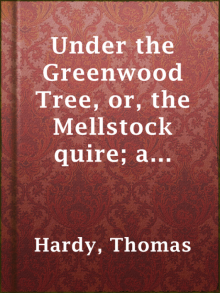 Under the Greenwood Tree; Or, The Mellstock Quire
Under the Greenwood Tree; Or, The Mellstock Quire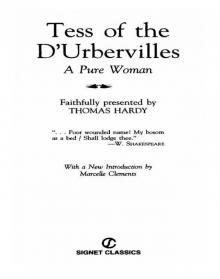 Tess of the D'Urbervilles
Tess of the D'Urbervilles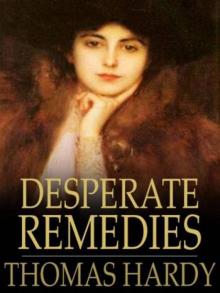 Desperate Remedies
Desperate Remedies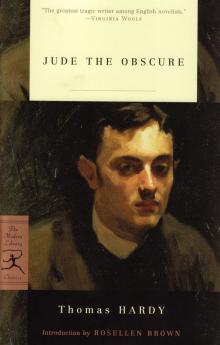 Jude the Obscure
Jude the Obscure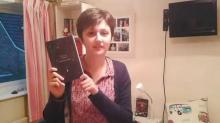 Two on a Tower
Two on a Tower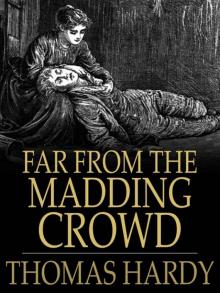 Far from the Madding Crowd
Far from the Madding Crowd The Return of the Native
The Return of the Native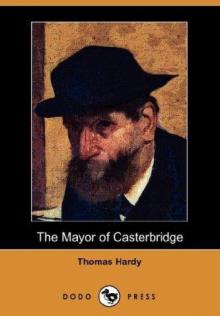 The Mayor of Casterbridge
The Mayor of Casterbridge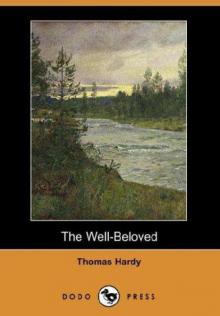 The Well-Beloved
The Well-Beloved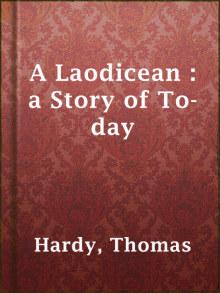 A Laodicean : A Story of To-day
A Laodicean : A Story of To-day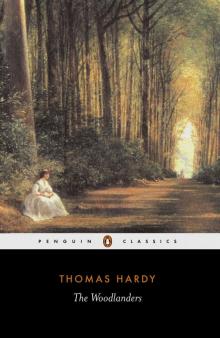 The Woodlanders
The Woodlanders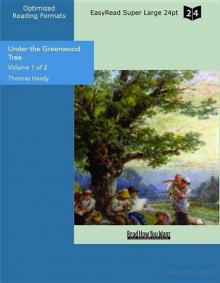 Under the Greenwood Tree
Under the Greenwood Tree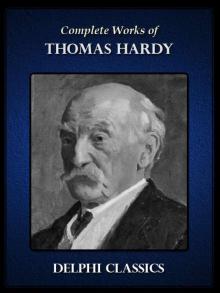 Complete Works of Thomas Hardy (Illustrated)
Complete Works of Thomas Hardy (Illustrated)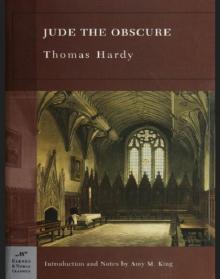 Jude the Obscure (Barnes & Noble Classics Series)
Jude the Obscure (Barnes & Noble Classics Series)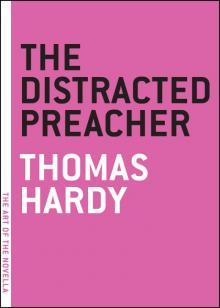 The Distracted Preacher
The Distracted Preacher